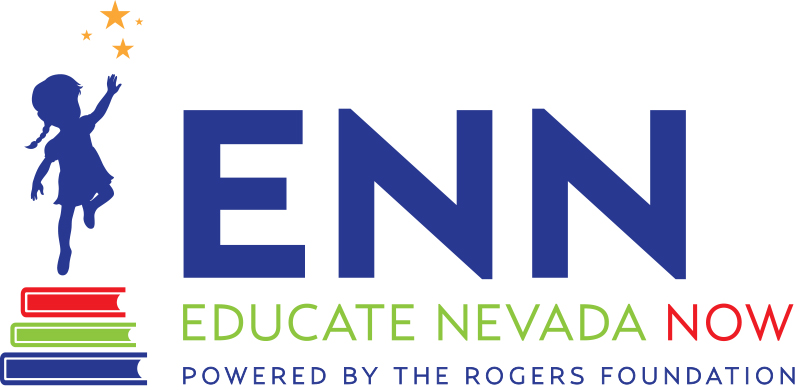$750M for a stadium? Here’s how that could aid education
This story first appeared in the Las Vegas Sun on September 02, 2016. Read the original version here.
Debates about building stadiums in Las Vegas are nothing new, but the current proposal to construct a domed one near the Strip with $750 million in public money is unprecedented.
The proposal, put forth by the Oakland Raiders and the Las Vegas Sands Corp., calls for that money to be raised through an increase in the room tax levied on guests of Las Vegas hotels.
“It’s a win-win situation for everyone, in our view,” said Sands’ owner Sheldon Adelson’s right-hand man, Andy Abboud, in a KNPR interview. Adelson personally volunteered $650 million, while Raiders owner Mark Davis promised $500 million toward the $1.9 billion project.
But $750 million isn’t much less than the $1.1 billion tax increase the legislature enacted last session, much of which went to education. It was a feat that took years of poor academic performance and a lot of political capital to accomplish, yet it could be less than a year between the initial proposal of the stadium in January and lawmakers holding a special session to vote on the scope of public support, possibly later this fall (with the aim of then getting approval to move forward from NFL owners at their January 2017 meeting).
Which has prompted many to wonder: Why all the rush for a stadium but not for education?
“To me, it’s an issue of priorities,” said Sylvia Lazos, UNLV law professor and a longtime public school advocate. “I’m disappointed that we’re willing to do that first before we invest in kids.”
Historically, the purpose of the room tax has been to help fund improvements and expansions to tourism infrastructure. So it’s highly unlikely it would ever be increased to funnel that much money just to education, even though a portion of the revenue is set aside for schools.
But what if it happened?
If given to the Clark County School District, $750 million would amount to an extra $2,300 for every public school student.
Here are a few other things it could fund:
Hiring 7,500 teachers with full benefits
In case you missed it, we have a bad teacher shortage here in Nevada. Hundreds of full-time positions go unfilled each year, forcing school districts to hire often underprepared long-term substitutes to fill the void. The disadvantage this forces on kids, who need stability and high-quality instruction for the best learning outcomes, is incalculable. With $750 million, you could hire 750 new teachers every year for a decade (assuming the combined individual salary and benefits didn’t exceed the current max of $100,000). To put that in perspective, the teacher shortage was around 900 empty positions at its height.
Repairing all broken school equipment, with enough extra to build at least six schools
Overcrowding and aging infrastructure, combined with a historically underfunded school district, have ravaged public schools in Clark County. In some of the rapidly growing parts of the valley, such as Mountain’s Edge, kids can go through entire grades in cramped portable classrooms. In the inner city, the oldest schools struggle every day with basic infrastructure, such as broken air conditioners, which force teachers to cancel classes. If you applied the $750 million to fixing existing schools, you could repair every piece of equipment in CCSD marked for replacement (the district’s repair list tallied around $550 million earlier this year) and still have enough money to build six top-of-the-line elementary schools to ease overcrowding (the most expensive new schools cost around $30 million). The remaining $15 million could be spent on other essentials (or maybe nine $5 servings of ice cream for all 320,000 kids in the district).
Keeping Gov. Brian Sandoval’s key reforms in place for at least three more years
Last year’s legislative session was crucial for K-12 education in Nevada. Among a host of other initiatives, Gov. Brian Sandoval put more than $250 million toward specialized elementary-level programs, so $750 million would pay for the continuation of those essentials — ranging from full-day kindergarten to Zoom schools — for at least another three years. Or, it could create 250,000 more Teach Nevada scholarships (up to $3,000 per semester) supporting students studying to become teachers, or fund 150,000 $5,000 year-end bonuses for teachers working in at-risk schools.
Giving $500 to every teacher every year for 83 years to spend on their classrooms
It’s a given that teachers reach into their own pockets to buy materials their classrooms desperately need — markers, paper, posters, books, binders, erasers and other fundamentals, which many argue should be covered by the state. One teacher at Ruby Thomas Elementary near the Boulevard Mall said he spends around $300 on his classroom annually, but added that it could easily be $700 for new teachers (an informal Facebook poll of CCSD teachers yielded numbers anywhere from $100 a year to as much as $1,500). If you settled on an average, you could afford to give $500 to all 18,000 teachers in CCSD for nearly a century.
